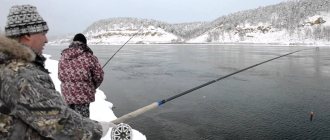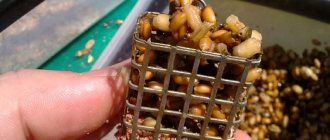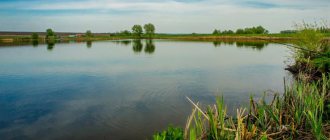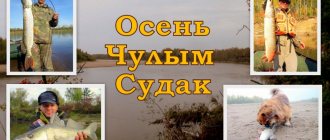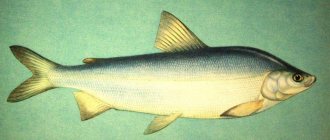Where to look for grayling in winter: habitats
Fish predominates in the northern regions of the country: Siberia, Irkutsk, Perm Territory, Krasnoyarsk. It lives both in large rivers and in mountain streams, in lakes of great depth and oxbow lakes that have become shallow.
How to find grayling on small and medium-sized rivers
You should look for grayling in the wilderness, far from big cities.
Therefore, in winter it is necessary to be well prepared informationally, technically and physically. Even before banks begin to form on a small river , the fish begin to prepare for the cold. She begins to gain fat and choose a place to stop. Parking areas in winter are different from summer. The fish stop in pools, depressions in the riverbed, and beaver ponds. In some places, grayling can spend the winter in artificially created reservoirs in the upper reaches of reservoirs and estuaries. In rivers of medium and large size, fish are located in large reaches. Small rivers may have beaver ponds. In winter, fish are often found there.
to greater depths as soon as the ice becomes thicker. According to the last ice, it can be found in shallow water. The fish chooses a single place as a stopover. There must be a current in the chosen location.
at the fishing spot a few hours before dawn. After it begins to get light, you need to prepare your gear and start fishing. The best time to bite is morning . The bite is worse during the day and evening. During the day, you need to finish fishing, start studying the reservoir and start looking for promising biting points. In the morning , the fish are caught better closer to the riffles. The most favorable time for catching in winter is the days when the thaw sets in. It is better to choose cloudy weather. During the fishing period, you should not create unnecessary noise, since in winter the fish are also shy.
General provisions
Fishing in northern Siberia in winter can please the angler with a wide variety of trophies. The most desirable prey are:
- grayling;
- muksun;
- nelma;
- Arctic omul;
- taimen
Important! It should be noted that recently taimen has been included in the Red Book of the Russian Federation, therefore its removal from the reservoir is prohibited. Fishing for muksun and nelma is also not permitted everywhere.
Grayling
Grayling fishing in winter in northern Siberia can be more effective on mountain rivers, which never freeze completely and where a good oxygen regime is always maintained. From the ice, this fish can be caught using a large jig with a worm attached or a small vertical spoon.
In winter, on small Siberian rivers, this predator usually stands in pools and shallow holes, where there is practically no current. The most active bite is observed in April.
Muksun
Muksun is a rare fish species, so no one deliberately fishes for it in winter. It is occasionally caught on small artificial baits intended for other predators.
On the northern rivers of Siberia you can catch muksun weighing more than 8 kg.
This representative of the ichthyofauna is also found in the catches of fishermen who operate fixed nets and seines. Its largest population remains in the Ob, Irtysh and Lena rivers.
Nelma
Nelma belongs to the whitefish genus and can reach a weight of 50 kg. This species is also very rare, so winter anglers rarely manage to keep this fish on the hook. Those who have been lucky talk about its strongest resistance when playing.
Regular captures of this predator from the ice using winter amateur gear occur in the deltas of the Yenisei and Lena rivers. The following are used as baits:
- silver vertical spinners;
- small balancers of natural colors;
- large shiny jigs with a worm attached.
Since this fish is extremely cautious, you need to move as quietly as possible on the ice of the reservoir. The noise from drilling a hole also frightens the salmon, so it can be useful to stay longer in one place.
What are we fishing for?
In winter, you can make both jig and float tackle. For the first option, you need a fishing rod with a long nod. For the second method, the length of the nod can be any. You need to pay attention to its elasticity. It must resist the current and detect fish bites. It is better to use a metal nod that has sufficient load capacity.
What kind of jig is needed for grayling
To catch a jig, you should follow the following rules:
- A bloodworm tackle is used. It includes a winter fishing rod, which can have any design. There is also a nod made of nipple, lavsan or clock spring.
- A fishing rod with a long nod is used as a jig tackle.
- A jig is used with an attachment with a long hook shank.
- Lead or tin baits are used. It is also possible to use tungsten. However, the lighter the jig, the smoother the float will play. This plays a special role in deep winter.
- It is necessary to pay attention to the shape of the jig. It will be better if it is flat. In this case, it will better resist water, since grayling requires a smooth action of the bait with a large amplitude.
- For fishing line, a suitable diameter would be 0.15 mm. For fish over a kilogram, it is better to use a fishing line with a thickness of 0.18 mm.
- In addition to the main game, you can use another technique. Place the jig on the bottom, lift it and lower it to the bottom again. The current will move the bait. When falling, the bait raises turbidity. The bite occurs during the fall or immediately after it.
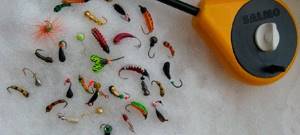
Winter donka
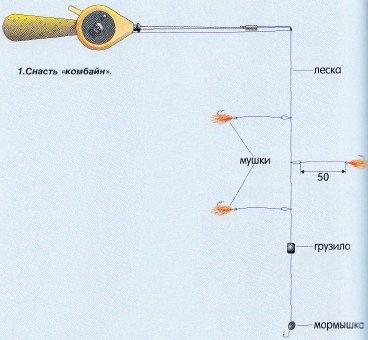
A jigless equipment is used. There is a sinker at the end of the line. Its weight is 3-5 g. The mass must be selected individually, taking into account the depth and speed of the flow. A hook is installed on the side leash. The length of the leash and the distance to the sinker should be such that the bait is located closer to the bottom.
The main advantage of this tackle is that it can be installed on the bottom at a single point and resist the current, and the fisherman can play with the nozzle. This trick cannot be turned with a regular jig attachment, as it will be carried away, especially during deep winter.
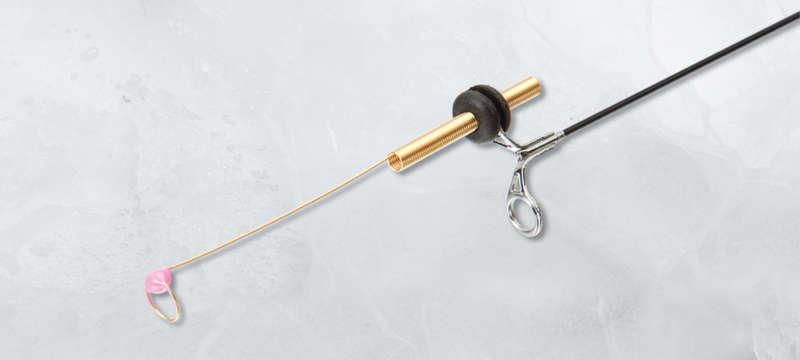
In working condition, the main line is taut, and the side nod picks up the current and it dangles smoothly.
Some kind of living creature is attached to the hook. It could be bloodworms, jigs, worms, maggots. Using a winter donka, fish can be caught anywhere. Jig gear assumes a fishing location with little or no current.
Winter fishing in Siberia
137
Winter fishing in Siberia has its own characteristics. In the vast expanses, the road infrastructure is poorly developed. For this reason, in the summer, many places are inaccessible for fishing. But winter fishing is different in that there is freedom of movement. They move along frozen river beds using sleighs or snowmobiles.
The advantage of winter fishing is that the annoying animals that inhabit the taiga hide and sleep during this period. Winter fishing in Siberia is fundamentally different from fishing in the south. The main advantage is the presence of a large number of fish.
For winter fishing, the fisherman needs various devices that are not involved in fishing, but are necessary to prepare for this process. For example, to make a hole in the ice or clear it of snow and ice chips, as well as protect it from wind and frost. Adaptations are also needed for this. to help detect fish at the bottom of the parking area and attract it to the fishing site. Among the main accessories that are necessary for successful winter fishing are ice drills, picks, and ice saws. Among the devices that allow you to get to the water is an ice auger, which is also called a brace or auger. Fans of winter fishing in Siberia cannot do without this device due to the fact that thick ice builds up due to cold winters. Ice drills allow you to quickly and silently make the required number of holes.
Almost all ice axes are now auger-type. They differ depending on what drives the auger. Therefore, ice screws can be manual or mechanical.
In recent years, domestic drills made from titanium have appeared on the domestic market. Their advantages are that they are durable, do not corrode, and are durable. Motorized ice drills, depending on the type of engine, are divided into electric and gasoline.
Winter fishing in Siberia is different in that there are many ways to do it. Most often, fishing rods with floats and natural baits made from bloodworms and worms are used. Various baits are used, as here: https://agrozrk.ru/winter2015/klevo-holodnaya-voda-zimnyaya/. But winter fishing with jigs, live bait, metal spoons or pieces of fish, which are planted on special gear, is also interesting. And each of these methods requires a special arrangement of gear. Therefore, winter tackle manufacturers have perfected the design of high-quality winter fishing rods. Fans of winter fishing are offered collapsible fishing rods of excellent quality. They are easily collected at fishing sites. When choosing fishing rods, pay attention to the portability of the rods, their strength, ease of use, their resilience and elasticity.
What to use as bait
To catch winter grayling, baits are used, which are divided into two types: natural (various types of invertebrates) and artificial (imitation invertebrates).
Bloodworm
Bloodworms are the larvae of the bell mosquito or “raspberry”. The most affordable option. Grayling is the best catcher for bloodworms. It is used with hook or jig tackle. Plant two or three pieces. In the dead of winter, you can try fishing with one bloodworm.
Small insects
Fresh insects are best. It is important that the bait looks as realistic and natural as possible.
Other baits: jigs , wormwood moth . Mormysh can be found in burdock seed pods. The moth lives in the thickenings of Chernobyl stems.
Another bait could be a caddis fly . It is collected in the fall and stored until winter arrives. In winter, it can be collected in unfrozen rivers in the plant debris that is present at the bottom.
Worm, maggot, others
Worms are prepared in the fall.
They are stored in boxes in winter. The boxes are placed in a cellar or other cool place. Worms are as good as bloodworms, and even more so: when fish are active, the catch can be much greater. The nozzle is large and smells strong. Another attachment is bark beetle : pine or birch. It is prepared in the fall in clearings. To search, they pick up stumps and fallen tree trunks. It is also found on living trees under the bark. It is worth choosing places where the bark peels off. The nozzle is stored in a box filled with sawdust. The storage location should not be heated (for example, a barn). After the onset of cold weather, the bark beetle freezes. So it tolerates low temperatures well. It can also be stored in the freezer after torpor. The fish grabs the bark beetle greedily and confidently.
Is it worth catching grayling with flies in winter?
In winter, artificial flies are used to catch grayling. The bait must accurately imitate the insect. The fly is installed 20 cm higher than the jig. A garland is usually used: up to 5 lines with flies are attached to the main line. It is more advisable to use garlands where the depth is three meters and below. The game is based on sharply pulling the fishing line 20-30 cm to the hole and then releasing the equipment. Instead of a jig, you can use a sinker weighing from 3 to 5 grams. The color of the fly should be catchy and bright. red or yellow hairs . It is best to have several flies in stock that vary in shape and color.
Tackle model with retractable leader and front sight
A distinctive feature of this tackle is that the hook with the nozzle and the load are not located on the same line, but are spaced apart. There is a weight at the end of the fishing line, and above there is a leash with a hook and bait. This species is used to catch fish near the bottom.
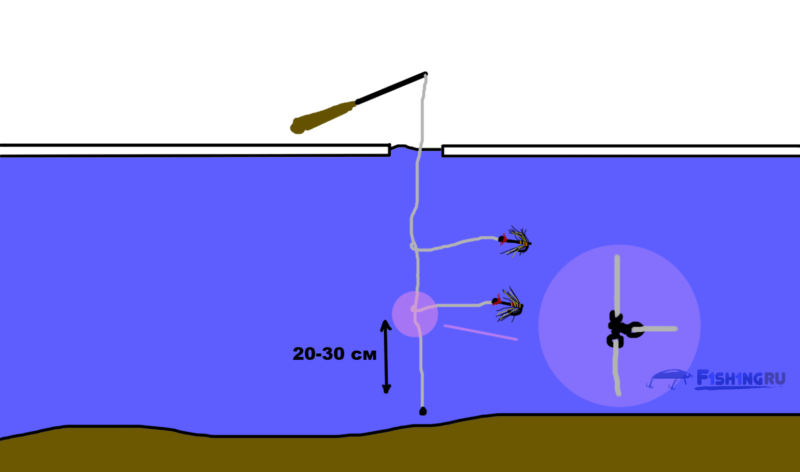
There are several types of fastening:
- Deaf . Easiest to use. The weight is installed at the end of the fishing line. A loop is made above the load. It is installed at a distance of 20-30 cm. A leash with a hook is attached to the loop.
- A double swivel is installed above the secured load. A leash is attached to it. It is possible to install a triple swivel so that the line, leader and sinker are installed at each eye of each swivel. Swivels prevent the equipment from twisting.
- Sliding . This view mirrors the previous version. A leash is attached to the main line. There is a load on the other leash. It moves easily along the line. The length of the leash should be from 20 to 30 cm. You need to take the swivel and place it on the main fishing line. A leash is attached to it. There is another swivel at the end of the leash. The weight is attached to it. The stopper is installed at a point located below the installed swivel. This option makes it possible to change the location of the load and the leash. Disadvantage of the method: when casting, the load will fly first. To reduce sliding, it is necessary to make an additional stopper above the attachment point.
The leash can be attached to the rig in several ways:
- "Loop in loop." A loop is made at the end of the leash. It needs to be threaded through a loop on the fishing line. A hook is installed in this loop;
- Swivel mount. This option reduces overlaps;
- Fastening with a clasp. This is the most modern option. It makes it possible to change the leash for another.
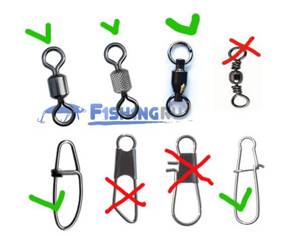
Video on catching grayling in winter
Grayling fishing in Siberia, video:
Fishing in the wilderness 2018-2019:
